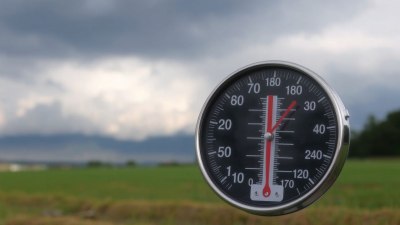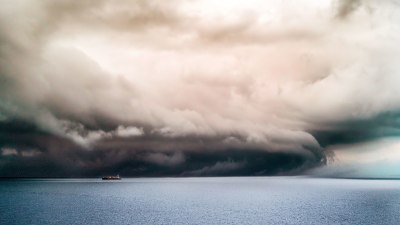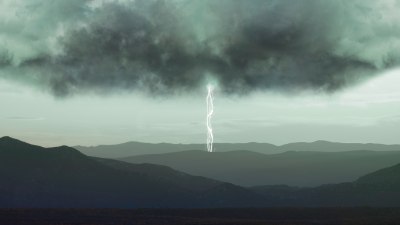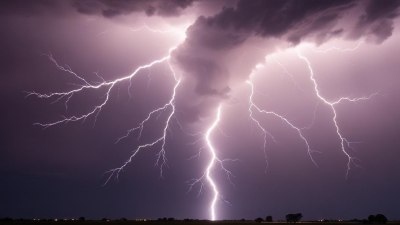The Connection Between Wildfire Smoke and Lightning Storms
Explore how wildfire smoke interacts with lightning storms and its effects on the environment.
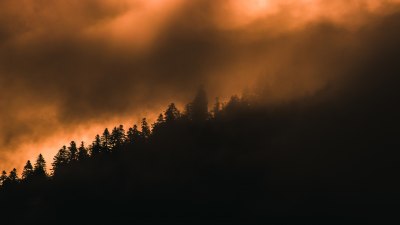
The interplay between wildfire smoke and lightning storms is a complex topic that has garnered the attention of scientists and environmentalists alike. Wildfires, which are increasingly frequent and intense due to climate change, emit significant amounts of smoke into the atmosphere. This smoke contains a variety of particulate matter, including soot and ash, as well as volatile organic compounds (VOCs) that can have far-reaching impacts on air quality, weather patterns, and even the occurrence of lightning storms.
Understanding the connection between wildfire smoke and lightning storms begins with a fundamental grasp of how wildfires behave. Wildfires generate intense heat and release gases and particles as they burn. This can lead to the formation of pyrocumulonimbus clouds—thunderstorm clouds that develop from the heat of the wildfire. These clouds can influence local atmospheric dynamics, potentially leading to the creation of lightning.
The Role of Pyrocumulonimbus Clouds
Pyrocumulonimbus clouds are unique formations that act as incipient convective towers, rising high into the stratosphere. They can develop when large wildfires emit substantial heat and moisture into the atmosphere, creating a vertical column of rising air. This column can reach altitudes where temperature and humidity conditions are right for the formation of thunderstorms. Once a pyrocumulonimbus cloud forms, it can produce lightning due to the electrical charge separation that occurs within the cloud.
Studies have shown that wildfires can significantly increase the frequency and intensity of lightning strikes in the vicinity. This is particularly concerning because lightning fires can ignite additional wildfires, creating a feedback loop that compounds the issue. As weather patterns continue to shift due to climate change, understanding this connection becomes even more critical. Wildfire smoke, therefore, does not just contribute to localized air pollution; it also plays a role in broader atmospheric phenomena.
Impacts of Wildfire Smoke on Atmospheric Chemistry
When wildfire smoke enters the atmosphere, it transforms the chemical makeup of the air. The particulate matter can interact with clouds and precipitations, enhancing cloud condensation nuclei (CCN) formation. This can lead to altered precipitation patterns, which may further influence the development of extreme weather events. Some research suggests that the presence of smoke particles can increase rainfall in certain conditions, possibly affecting lightning storm behavior as well.
Moreover, wildfire smoke can impact atmospheric stability. The introduction of smoke into the atmosphere can create temperature inversions, where cooler air is trapped beneath warmer air. This can hinder the rise of air currents, potentially stifling the development of convection necessary for thunderstorm formation. However, when combined with intense heating from fires, these conditions can paradoxically promote the development of pyrocumulonimbus clouds, fostering lightning storms.
Climate Change and Increasing Fire Activity
The relationship between wildfire smoke and lightning storms is underscored by the broader context of climate change. Rising temperatures and altered precipitation patterns contribute to increased wildfire activity, leading to more frequent smoke introductions into the atmosphere. This, in turn, influences weather systems, generating conditions that are conducive to lightning storms.
Climate models predict that as global temperatures continue to rise, the intensity and frequency of both wildfires and thunderstorms will increase. Understanding the link between wildfire smoke and lightning storms is critical for predicting and managing these extreme events in a warming world. Enhanced fire management strategies must incorporate considerations of how smoke can interact with weather patterns and storm dynamics.
Health and Environmental Concerns
Beyond the meteorological implications, the intersection of wildfire smoke and lightning storms raises significant health and environmental concerns. Wildfire smoke is detrimental to air quality, leading to respiratory issues and other health problems for populations exposed to particulate matter. As lightning storms become more frequent, the potential for igniting new wildfires increases, exacerbating air quality challenges and hindering recovery efforts in affected areas.
Furthermore, the ecological impacts of this interplay extend to the surrounding environment. Wildfires are not merely destructive forces but can play a role in certain ecosystems by promoting regeneration. However, when new fires ignite from lightning strikes in smoke-affected areas, the cycle of destruction may lead to long-term ecological degradation, altering habitat, and species composition.
Research and Monitoring Initiatives
In light of the growing evidence linking wildfire smoke to lightning storms, researchers have initiated various studies and monitoring programs aimed at comprehensively understanding these phenomena. Satellite imagery and ground-based sensors are increasingly utilized to track wildfire smoke dispersion and to monitor the development of thunderstorms, allowing for better forecasting and potential mitigation strategies.
Collaborative efforts among meteorologists, climatologists, and environmental scientists are vital in advancing our understanding of this complex relationship. By integrating data from different sources, researchers can refine predictive models that help anticipate the onset of both wildfires and lightning strikes, potentially providing timely information for emergency response and public safety initiatives.
Future Directions
As the effects of climate change become more pronounced, it is essential to continue exploring the intricate connections between wildfire smoke and lightning storms. Future research should focus on developing more precise models to predict how changing environmental conditions can influence this relationship. Additionally, efforts to improve public awareness about the health impacts of wildfire smoke and the risks associated with lightning-induced fires are crucial.
Innovative strategies such as prescribed burning and fuel management will be essential to mitigate wildfire risk, potentially decreasing the frequency of smoke emissions that can trigger pyrocumulonimbus formation and associated lightning. By taking proactive measures, communities can better prepare for the growing threats posed by wildfires and thunderstorms in an era of climate instability.
In conclusion, the connection between wildfire smoke and lightning storms exemplifies the intricate web of interactions within our climate system. As scientists continue to unravel these complexities, it becomes increasingly clear that addressing climate change is integral to managing the risks associated with wildfires, air quality, and extreme weather. Through research, collaboration, and strategic planning, society can better navigate these challenges and work towards a healthier, more sustainable future.






